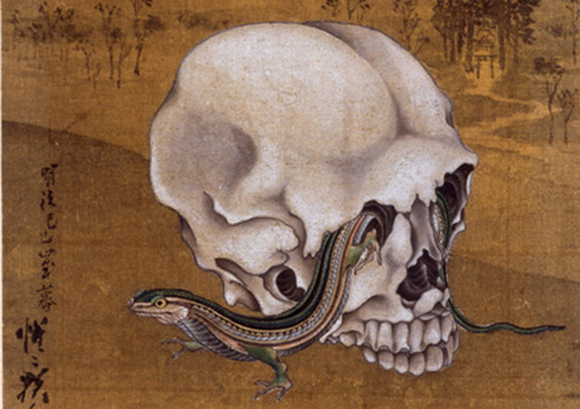
When you think of Japanese ukiyo-e, or woodblock prints, you probably think of Hokusai’s beautiful landscapes in his Thirty Six Views of Mount Fuji, or the stylized prints of beautiful courtesans in traditional Japanese dress. But there are also many pieces of Japanese art and ukiyo-e from the Edo to the Meiji period (between 1603 and 1912) that represent a more mythical and macabre side of Japan.
The following is a collection of 20 pieces that all contain skulls or skeletons in some form, many of them by renowned and famous artists of the time.
Utagawa Kuniyoshi
Soma no Furudairi (Takiyasha the Witch and the Skeleton Specter)
Kuniyoshi was renowned for his paintings of historical and mythical scenes, and this piece combines both. Dating from around 1845, this famous painting from one of the masters of Japanese woodblock prints depicts a skeleton demon summoned by Princess Takiyasha. After the death of her father, Taira no Masakado, Princess Takiyasha continued living in the ruined palace of Sōma, and legend has it that she was a practitioner of witchcraft.
Oiwa Boukon
Another work by Kuniyoshi, this depicts the skeleton behind Oiwa possessing her.
One of the caricatures Kuniyoshi excelled at features a skull design on the clothing.
They may be small, bu there are skulls to be found in amongst the horde of demons.
Katsushika Hokusai
Kohada Koheiji
Koheiji was a kabuki actor who appeared in kabuki productions of ghost stories and romances. He was killed by the man with whom his wife was having an affair, and this picture shows him peering over a mosquito net at the two adulterous lovers.
Kobayashi Kiyochika
The Hell Courtesan, Jigoku Dayu
The Jigoku Dayu, or Hell Courtesan, was a famous courtesan known for her relationship with the priest Ikkyū, and she is the subject of many macabre pieces of Japanese art. Here, she graces the centre of the piece while on the right hand side a skeleton dances with a towel tied around its head. The skeleton guests on the left applaud.
Here we have a policeman rebuking two skeletal women for their lewd display of naked bones at Tennoji Temple in Yanaka. As well as human skeletons there’s also a rather cute little dog or cat down in the right-hand corner.
Kawanabe Kyōsai
Skeletons Pulling the Sleeve of a Beauty
Notice the top hat worn by one of the skeletons.
Skeleton tea ceremony
Three skeletons enjoy a traditional Japanese tea ceremony.
The Hell Courtesan, Jigoku Dayu
In Kyosai’s rendition of the courtesan, he captures her in an aggressive movement.
Takeuchi Seihō
Color on silk image of ‘kanka’
A skeleton in a sexy pose.
Tsukioka Yoshitoshi
Hell Courtesan and Ikkyū
In Yoshitoshi’s version of the Hell Courtesan and her lover, Ikkyū spears a skull on a bamboo cane in front of her.
Enlightenment of The Hell Courtesan
Pale skeletons drift behind the beautiful courtesan.
This skull design would make a great tattoo.
Kawanabe Kyōsai
This creepy depiction of a lizard slithering through the empty eye socket of a skull remains very popular today.
Itō Jakuchū
Jakuchū rarely drew skulls, so this is an unusual piece. The stark use of black and white is striking.
Utagawa Hiroshige
This image shows Taira no Kiyomori being assailed by the vengeful ghosts of the warriors he triumphed over in the Heiji Rebellion. Look carefully and you will see that the snowy landscape is actually composed of skulls.
Unknown
Two skeletons have a picnic. This piece is thought to be from the Meiji period, around the end of the 19th century.
These skeletons appear to be having a good old traditional Japanese party, drinking tea and playing instruments.
This skeleton’s smile appears rather forced as he wanders around the woods at night with a lantern.
What do you think of these creepy works, Rocketeers? Would you like to see more, or do you prefer the typical Ukiyo-e style?
Source: Japaaan Magazine

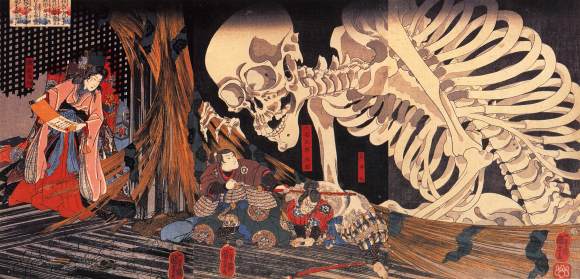
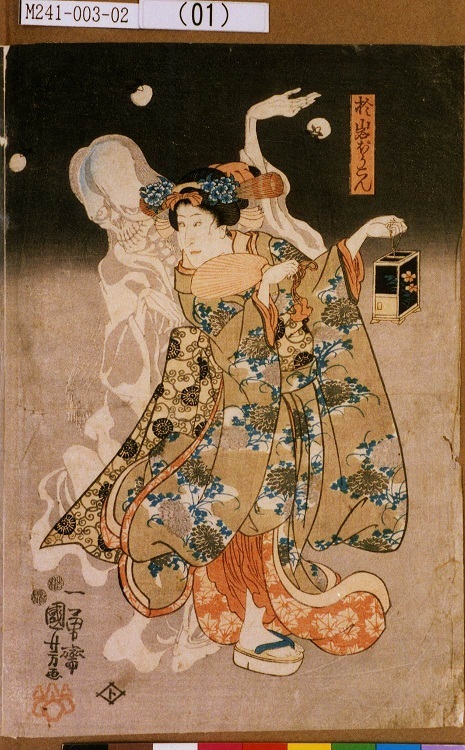
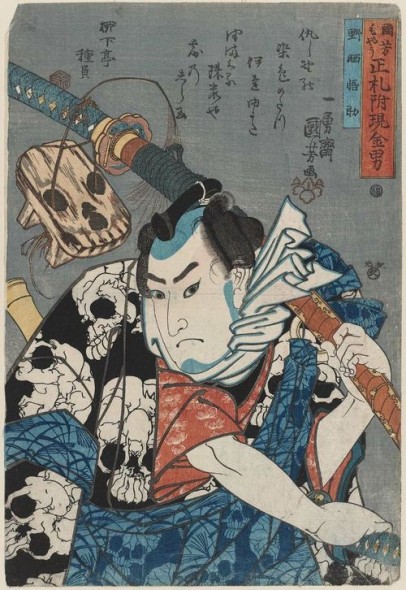
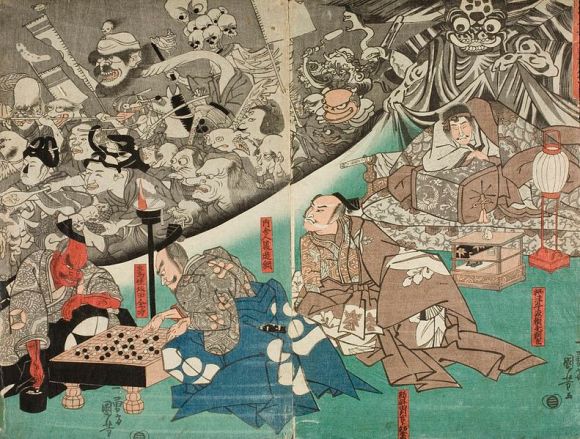

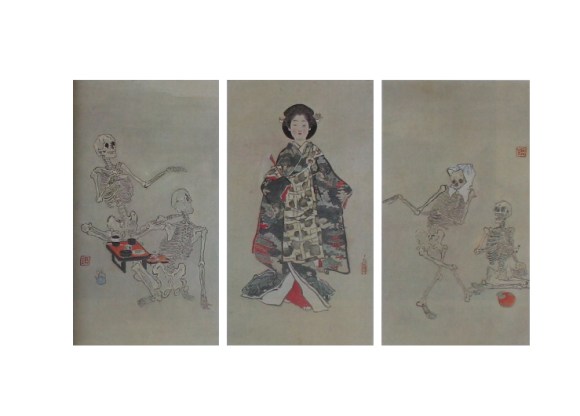
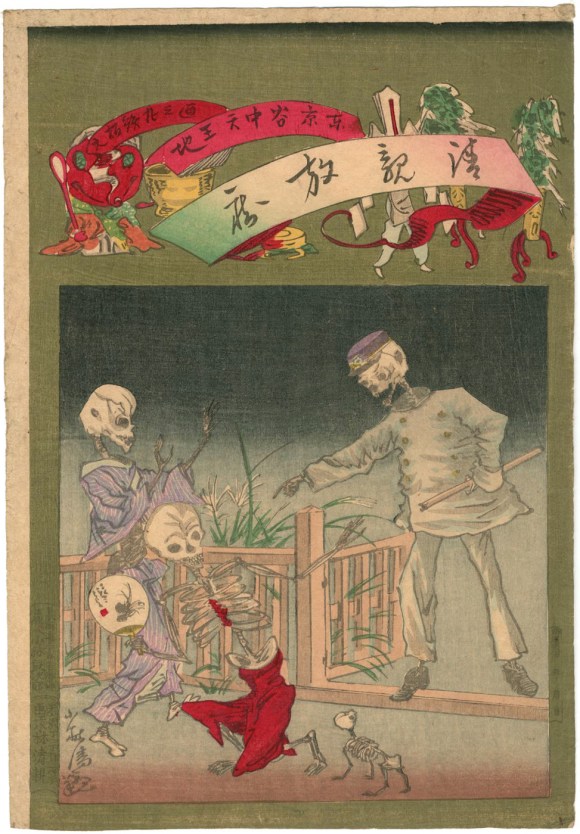
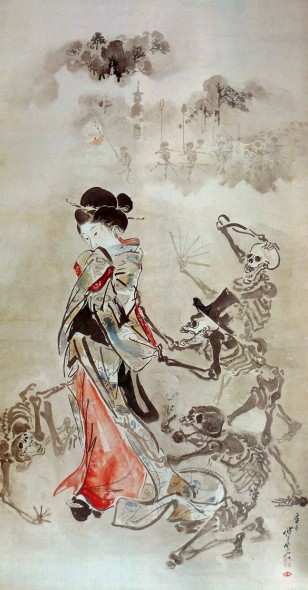
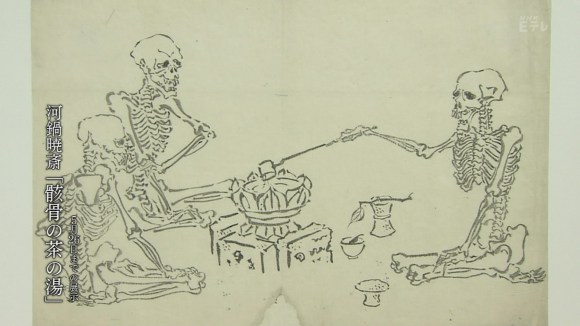

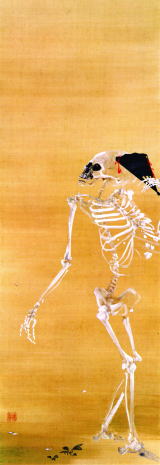
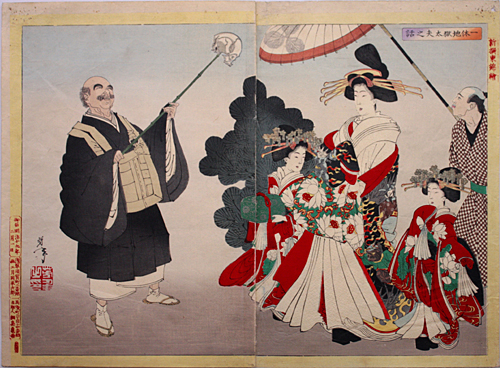
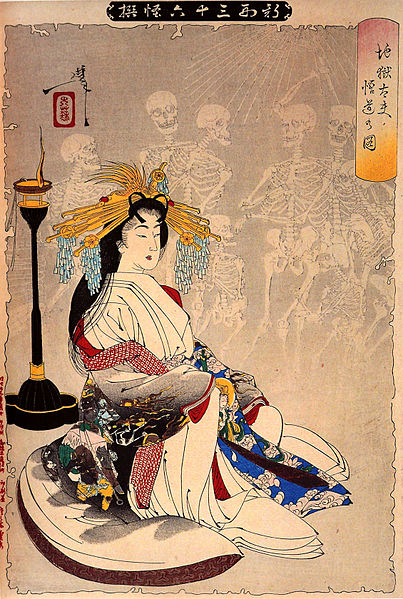
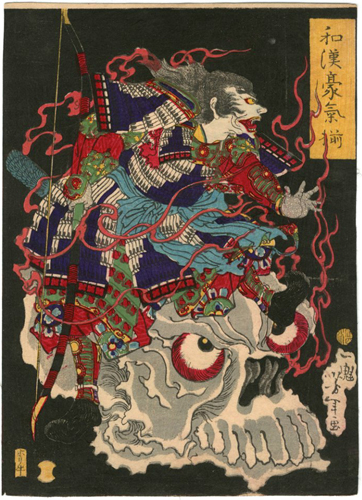
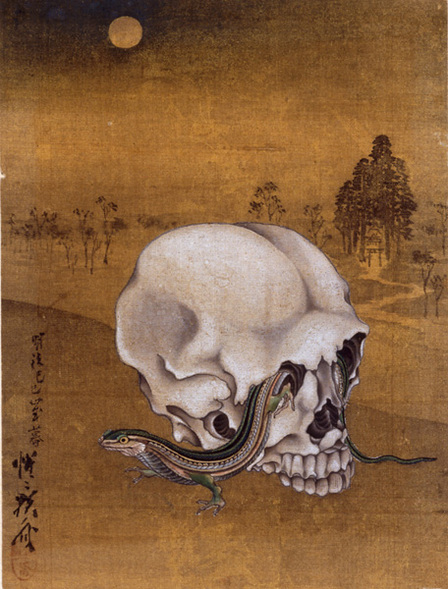
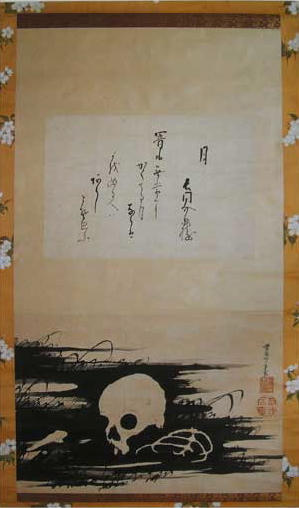
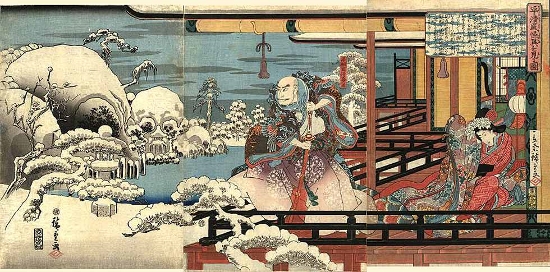
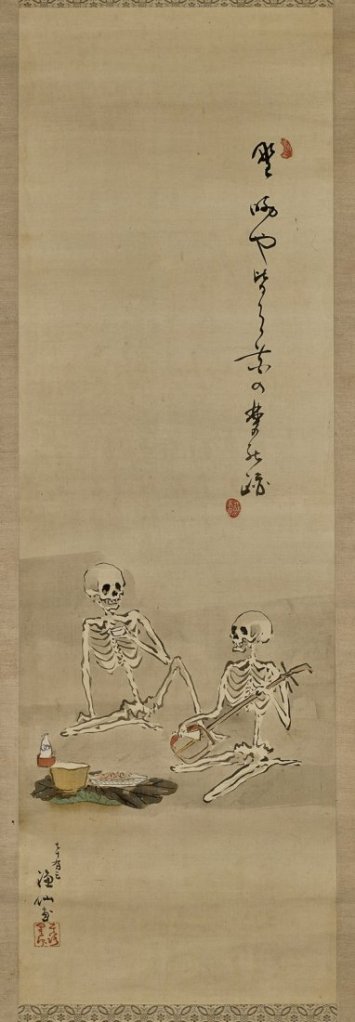

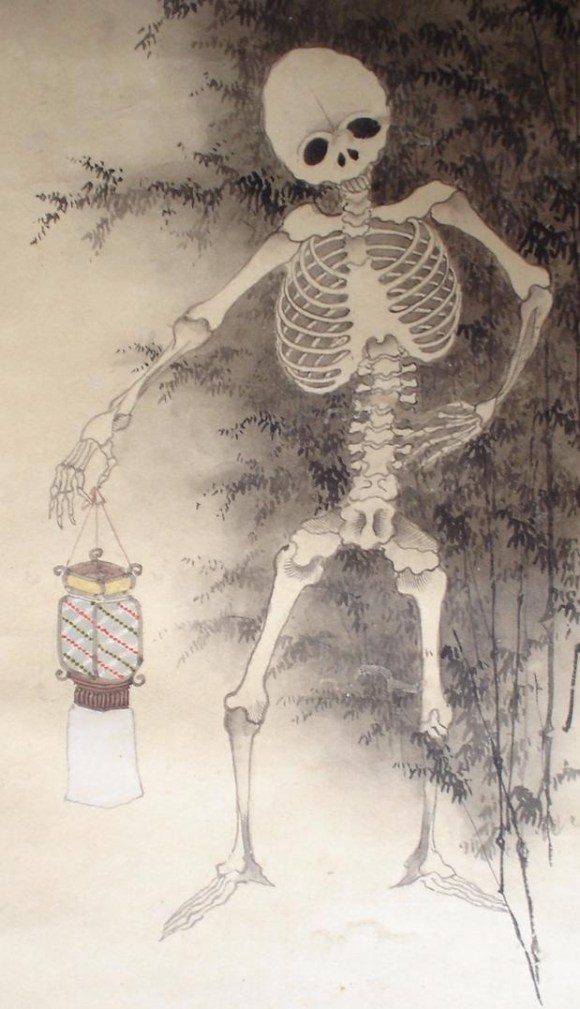
 Converse All-Stars team up with two all-stars of Japanese art for Wave, Skull ukiyo-e shoes【Pics】
Converse All-Stars team up with two all-stars of Japanese art for Wave, Skull ukiyo-e shoes【Pics】 Hello Kitty would look cute even if you peeled away all her flesh, new toy line shows us【Photos】
Hello Kitty would look cute even if you peeled away all her flesh, new toy line shows us【Photos】 Japanese art has never looked quite as beautiful as when it’s made out of Japanese beef【Photos】
Japanese art has never looked quite as beautiful as when it’s made out of Japanese beef【Photos】 Artist recreates famous Japanese ukiyo-e paintings using fine wines
Artist recreates famous Japanese ukiyo-e paintings using fine wines Spooky wasanbon sugar skulls will make your Halloween coffee creepier
Spooky wasanbon sugar skulls will make your Halloween coffee creepier Randomly running into a great sushi lunch like this is one of the best things about eating in Tokyo
Randomly running into a great sushi lunch like this is one of the best things about eating in Tokyo Our reporter takes her 71-year-old mother to a visual kei concert for the first time
Our reporter takes her 71-year-old mother to a visual kei concert for the first time Disney princesses get official manga makeovers for Manga Princess Cafe opening in Tokyo
Disney princesses get official manga makeovers for Manga Princess Cafe opening in Tokyo Is the new Shinkansen Train Desk ticket worth it?
Is the new Shinkansen Train Desk ticket worth it? Beautiful new Final Fantasy T-shirt collection on the way from Uniqlo【Photos】
Beautiful new Final Fantasy T-shirt collection on the way from Uniqlo【Photos】 Foreign English teachers in Japan pick their favorite Japanese-language phrases【Survey】
Foreign English teachers in Japan pick their favorite Japanese-language phrases【Survey】 Hey, Japanese taxi driver! Take us to your favorite restaurant in Tsuruga City!
Hey, Japanese taxi driver! Take us to your favorite restaurant in Tsuruga City!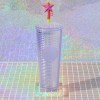 Starbucks releases a special sparkly tumbler in Japan to support diversity
Starbucks releases a special sparkly tumbler in Japan to support diversity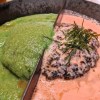 Hamburg and Hamburg Shibuya: A Japanese restaurant you need to put on your Tokyo itinerary
Hamburg and Hamburg Shibuya: A Japanese restaurant you need to put on your Tokyo itinerary There’s a park inside Japan where you can also see Japan inside the park
There’s a park inside Japan where you can also see Japan inside the park We try out “Chan Ramen”, an underground type of ramen popular in the ramen community
We try out “Chan Ramen”, an underground type of ramen popular in the ramen community New Studio Ghibli bedding sets are cool in all senses of the word
New Studio Ghibli bedding sets are cool in all senses of the word Our Japanese reporter visits Costco in the U.S., finds super American and very Japanese things
Our Japanese reporter visits Costco in the U.S., finds super American and very Japanese things New Pokémon cakes let you eat your way through Pikachu and all the Eevee evolutions
New Pokémon cakes let you eat your way through Pikachu and all the Eevee evolutions Japanese convenience store packs a whole bento into an onigiri rice ball
Japanese convenience store packs a whole bento into an onigiri rice ball Hanton rice — a delicious regional food even most Japanese people don’t know about, but more should
Hanton rice — a delicious regional food even most Japanese people don’t know about, but more should Final Fantasy, Kingdom Hearts, and Dragon Quest pet product line announced by Square Enix
Final Fantasy, Kingdom Hearts, and Dragon Quest pet product line announced by Square Enix Studio Ghibli releases Kiki’s Delivery Service chocolate cake pouches in Japan
Studio Ghibli releases Kiki’s Delivery Service chocolate cake pouches in Japan Japan’s bone-breaking and record-breaking roller coaster is permanently shutting down
Japan’s bone-breaking and record-breaking roller coaster is permanently shutting down New definition of “Japanese whiskey” goes into effect to prevent fakes from fooling overseas buyers
New definition of “Japanese whiskey” goes into effect to prevent fakes from fooling overseas buyers Foreign passenger shoves conductor on one of the last full runs for Japan’s Thunderbird train
Foreign passenger shoves conductor on one of the last full runs for Japan’s Thunderbird train Kyoto bans tourists from geisha alleys in Gion, with fines for those who don’t follow rules
Kyoto bans tourists from geisha alleys in Gion, with fines for those who don’t follow rules Studio Ghibli unveils Mother’s Day gift set that captures the love in My Neighbour Totoro
Studio Ghibli unveils Mother’s Day gift set that captures the love in My Neighbour Totoro Domino’s Japan now sells…pizza ears?
Domino’s Japan now sells…pizza ears? Toyota built a life-sized Miraidon Pokémon and are letting people test drive it this weekend
Toyota built a life-sized Miraidon Pokémon and are letting people test drive it this weekend New Japanese KitKat flavour stars Sanrio characters, including Hello Kitty
New Japanese KitKat flavour stars Sanrio characters, including Hello Kitty Sales of Japan’s most convenient train ticket/shopping payment cards suspended indefinitely
Sales of Japan’s most convenient train ticket/shopping payment cards suspended indefinitely Sold-out Studio Ghibli desktop humidifiers are back so Totoro can help you through the dry season
Sold-out Studio Ghibli desktop humidifiers are back so Totoro can help you through the dry season Japanese government to make first change to romanization spelling rules since the 1950s
Japanese government to make first change to romanization spelling rules since the 1950s Ghibli founders Toshio Suzuki and Hayao Miyazaki contribute to Japanese whisky Totoro label design
Ghibli founders Toshio Suzuki and Hayao Miyazaki contribute to Japanese whisky Totoro label design Doraemon found buried at sea as scene from 1993 anime becomes real life【Photos】
Doraemon found buried at sea as scene from 1993 anime becomes real life【Photos】 Tokyo’s most famous Starbucks is closed
Tokyo’s most famous Starbucks is closed One Piece characters’ nationalities revealed, but fans have mixed opinions
One Piece characters’ nationalities revealed, but fans have mixed opinions We asked a Uniqlo employee what four things we should buy and their suggestions didn’t disappoint
We asked a Uniqlo employee what four things we should buy and their suggestions didn’t disappoint Princesses, fruits, and blacksmiths: Study reveals the 30 most unusual family names in Japan
Princesses, fruits, and blacksmiths: Study reveals the 30 most unusual family names in Japan Studio Ghibli’s new desktop Howl’s Moving Castle will take your stationery on an adventure
Studio Ghibli’s new desktop Howl’s Moving Castle will take your stationery on an adventure Up the ukiyoe with this Iron Maiden woodblock print featuring Eddie as a hellish courtesan
Up the ukiyoe with this Iron Maiden woodblock print featuring Eddie as a hellish courtesan Kabuki and geisha cats appear as cute purses based on famous Japanese ukiyo-e woodblock prints
Kabuki and geisha cats appear as cute purses based on famous Japanese ukiyo-e woodblock prints Taiwanese student creates incredible art with materials others would throw away【Photos】
Taiwanese student creates incredible art with materials others would throw away【Photos】 Disney characters dress up as Bearbricks for Halloween, results range from cute to disturbing
Disney characters dress up as Bearbricks for Halloween, results range from cute to disturbing Beautiful ukiyo-e woodblock print artwork appears on three of Japan’s premium beer brands
Beautiful ukiyo-e woodblock print artwork appears on three of Japan’s premium beer brands Foreign tourists pick the top 10 must-visit museums in Japan
Foreign tourists pick the top 10 must-visit museums in Japan Ghibli action figures bring Nausicaä of the Valley of the Wind soldiers to life in 3-D form
Ghibli action figures bring Nausicaä of the Valley of the Wind soldiers to life in 3-D form Official ukiyo-e project brings a bit of historical Japan to a galaxy far, far away
Official ukiyo-e project brings a bit of historical Japan to a galaxy far, far away Learn the anatomy of a ramen bowl with new 25-piece 3-D Shoyu Ramen puzzle
Learn the anatomy of a ramen bowl with new 25-piece 3-D Shoyu Ramen puzzle Seiko’s blingtastic luxury watch based on Hokusai’s Great Wave costs a pretty yenny
Seiko’s blingtastic luxury watch based on Hokusai’s Great Wave costs a pretty yenny Dead body found in real-life Totoro’s Forest in Japan
Dead body found in real-life Totoro’s Forest in Japan Fukuoka’s “Wisteria Tunnel” delights visitors with pretty pastel petals
Fukuoka’s “Wisteria Tunnel” delights visitors with pretty pastel petals Go to hell: Unzen Hot Springs invites visitors to take an infernal stroll through a field of deadly hell-mouths
Go to hell: Unzen Hot Springs invites visitors to take an infernal stroll through a field of deadly hell-mouths Adorable, whimsical pictures of animals painted by old-school Japanese masters
Adorable, whimsical pictures of animals painted by old-school Japanese masters Japanese Twitter user snoops under brother’s bed, finds less yet far more than she bargained for
Japanese Twitter user snoops under brother’s bed, finds less yet far more than she bargained for
Leave a Reply